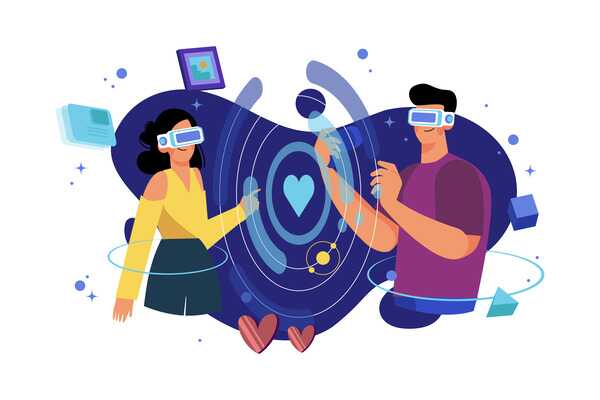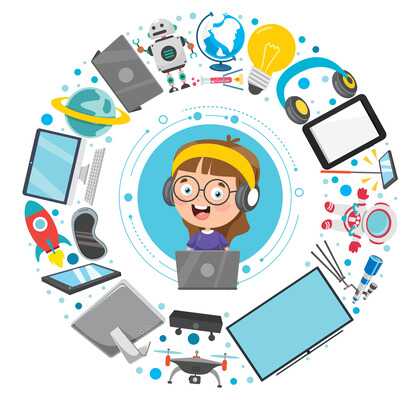Embracing AR: Unlocking New Possibilities in Various Industries
The world of technology continues to evolve at an astonishing pace, and one innovation that has gained significant attention in recent years is Augmented Reality (AR). With its ability to overlay digital information onto the real world, AR has opened up new possibilities across various industries, transforming the way we experience and interact with our surroundings. From gaming to healthcare, retail to manufacturing, AR is making its mark and revolutionizing the way businesses operate. Augmented Reality is a technology that integrates digital content, such as images, videos, or 3D models, into the real-world environment. Unlike Virtual Reality (VR), which immerses users in a completely virtual world, AR enhances the real world by overlaying virtual elements onto it. This can be achieved through specialized AR devices like smart glasses or through the cameras of smartphones and tablets. AR utilizes computer vision, depth tracking, and object recognition technologies to identify and track the real-world environment in real-time. By analyzing the surroundings, AR devices can precisely position and render digital content, ensuring it seamlessly integrates with the physical world. This enables users to view and interact with virtual objects as if they were part of their immediate environment. The gaming industry has been one of the early adopters of AR technology, with games like Pokémon Go capturing the imagination of millions worldwide. AR in gaming brings virtual characters and elements into the real world, allowing players to engage with their surroundings in exciting and immersive ways. It enhances the gaming experience by blending virtual and real-world elements, creating unique gameplay opportunities. In the retail industry, AR is transforming the way consumers shop. By using AR applications on their smartphones or AR-enabled smart mirrors, shoppers can visualize how products would look in their homes or try on virtual outfits before making a purchase. This enhances the online shopping experience, reduces product returns, and increases customer satisfaction. AR is revolutionizing healthcare by providing surgeons with real-time guidance during complex procedures. Through AR headsets, surgeons can overlay medical images, patient data, and virtual tools onto the surgical field, improving precision and reducing the risk of errors. Additionally, AR is being used for patient education, allowing individuals to visualize medical conditions and treatments. In the education sector, AR is opening up new possibilities for immersive and interactive learning experiences. AR applications can overlay digital information onto textbooks, enabling students to explore 3D models, interactive diagrams, and videos related to the subject matter. This visual and interactive approach enhances student engagement and understanding. The manufacturing industry is embracing AR to streamline production processes and improve worker efficiency. By wearing AR glasses, workers can receive real-time instructions, overlayed visual aids, and virtual representations of machinery. This helps reduce errors, accelerates training, and enhances productivity on the factory floor.
AR is not just a technology; it’s a catalyst for change in industries across the globe.
– Sophia Adams In the real estate industry, AR is transforming property viewings. Potential buyers can use AR apps to visualize how furniture would fit into a space, make virtual renovations, and explore different design options. This technology allows real estate agents to showcase properties remotely and provides buyers with a more immersive and interactive experience. AR is enhancing the travel and tourism industry by offering interactive experiences at historical sites, museums, and landmarks. AR applications can provide visitors with contextual information, virtual tours, and interactive storytelling, enriching their overall experience and making it more engaging and educational. The automotive industry is leveraging AR to improve driver safety and enhance the driving experience. AR heads-up displays (HUDs) can overlay real-time information, such as navigation directions, speed limits, and collision warnings, directly onto the windshield. This allows drivers to access important information without taking their eyes off the road. AR is revolutionizing the entertainment industry by blurring the lines between the digital and physical worlds. From live concerts with virtual performers to interactive AR experiences in theme parks, entertainment companies are leveraging AR to create immersive and unforgettable experiences for their audiences. In the sports industry, AR is enhancing the viewing experience for fans. AR overlays can provide real-time player statistics, replays, and interactive elements during live broadcasts, bringing fans closer to the action. AR is also being used in sports training, enabling athletes to analyze their performance and receive real-time feedback. AR is transforming marketing and advertising campaigns by providing interactive and engaging experiences. Brands can use AR to create virtual try-on experiences, interactive product demonstrations, and immersive storytelling campaigns. This technology captures consumer attention, increases brand awareness, and drives customer engagement. In the fields of design and architecture, AR is revolutionizing the way professionals conceptualize and present their ideas. AR applications allow designers to overlay virtual designs onto physical spaces, enabling clients to visualize how a finished project would look. This speeds up the design process, facilitates communication, and helps stakeholders make informed decisions. While AR presents numerous opportunities, it also faces challenges. Some of these challenges include hardware limitations, privacy concerns, and the need for intuitive and user-friendly interfaces. However, with ongoing advancements in technology, these challenges are being addressed, and the future of AR looks promising. The possibilities are vast, and as AR continues to evolve, it will likely find applications in industries beyond what we can currently imagine. Augmented Reality is revolutionizing various industries, unlocking new possibilities and transforming the way businesses operate. From gaming and retail to healthcare and education, AR is enhancing experiences, improving efficiency, and driving innovation. As the technology continues to advance, we can expect even more exciting applications and integration of AR across different sectors.Introduction to AR
How AR Works
AR in Gaming Industry
AR in Retail Industry
AR in Healthcare Industry



AR in Education Industry
AR in Manufacturing Industry
AR in Real Estate Industry
AR in Travel and Tourism Industry
AR in Automotive Industry
AR in Entertainment Industry
AR in Sports Industry
AR in Marketing and Advertising
AR in Design and Architecture
AR Challenges and Future Possibilities

Conclusion














































